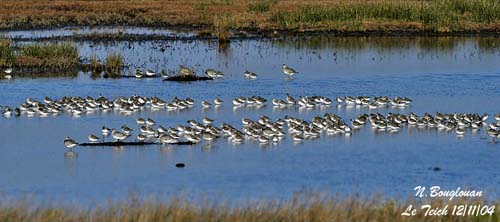
The different bills’shapes - Page 3
Show me your bill, I will know what you eat!
Photographers:
Bob Moul
Nature Photography
Tom Grey
Tom Grey's Bird Pictures
Maxime Dechelle
LEPAPARRAZO
Patrick Ingremeau
TAMANDUA
Nicole Bouglouan
PHOTOGRAPHIC RAMBLE
Text by Nicole Bouglouan
Sources:
L’ENCYCLOPEDIE MONDIALE DES OISEAUX - Dr Christopher M. Perrins - BORDAS - ISBN: 2040185607
HANDBOOK OF THE BIRDS OF THE WORLD Volume 3 by Josep del Hoyo-Andrew Elliott-Jordi Sargatal - Lynx Edicions - ISBN : 8487334202
See the article: Description of the bird and its plumage
Shorebirds are very numerous on coasts and estuaries, feeding on beaches and mudflats. But if they do it in the same way, they do not feed on the same areas, according to their bill shape and length.
All have very sensitive bill tip which helps them to locate and identify the prey in the mud. This tip is flexible and allows to seize the prey and to pull it out relatively clean from the sticky mud.

Shorebirds as plovers search for food at the highest level on beaches, in the dry sand. Plovers have a short bill and rarely probe. Most of their preys are localised by sight. On the other hand, they may attract the preys to the surface by tapping on the sand with the feet.
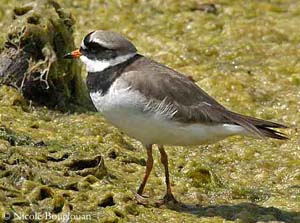
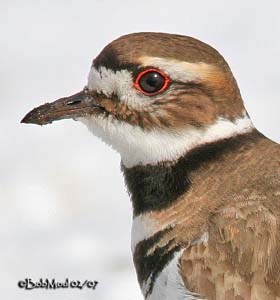
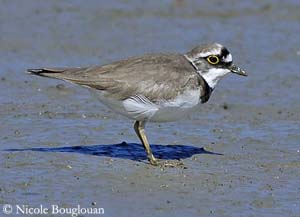
Charadrius vociferus
Charadrius hiaticula
Charadrius dubius
Further, in wetter and muddier areas, we can find shorebirds with medium-sized bill. They use it for probing into the mud.
The Common Redshank (Tringa totanus) is the typical species of these areas. Its bill has very pointed tip, and may probe into the mud up to 3-4 cm in depth. It also uses it to catch preys at mud or water surface.
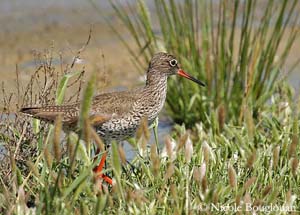
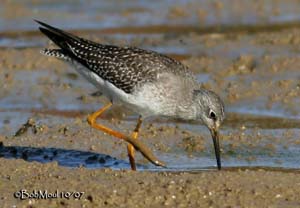
Tringa totanus
Tringa flavipes
However, other shorebirds such as godwits have longer and thicker bill allowing them to probe up to 12 cm in depth.
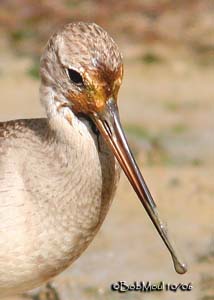
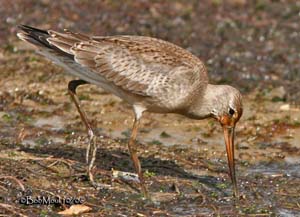
Limosa haemastica
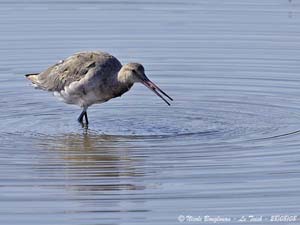
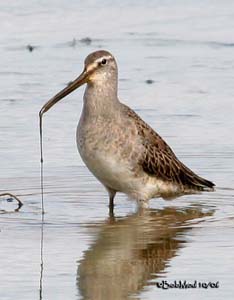
Limnodromus scolopaceus
Limosa limosa
Curlews nest in marshes and tundra where their long, down-curved bill of up to 15 cm long is able to probe into the wet soil and the mud to catch invertebrates, worms and molluscs.
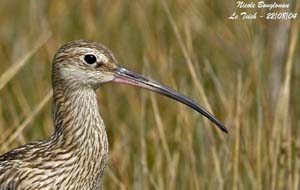
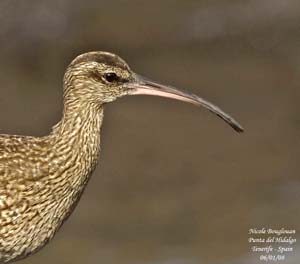
Numenius phaeopus
Numenius arquata
Shorebirds nest and live in wet areas. Their preferred food consists in aquatic vertebrates and invertebrates living at some centimetres in the mud or the sand. They need sensitive and fairly long bill to find and catch them.
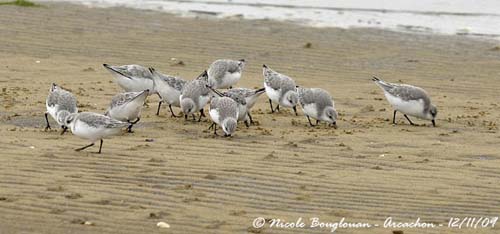
Sanderling - Calidris alba
And the latest, with very adapted up-curved bill, the avocets, use this tool as a sabre. The bird feeds in shallow water, with the semi-open bill slightly immersed, and performs movements from side to side while walking slowly. Invertebrates are detected by touch.
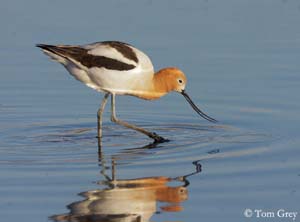
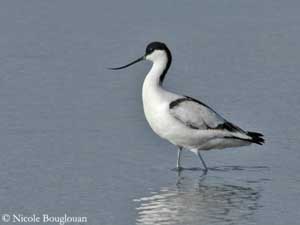
Recurvirostra americana
recurvirostra avosetta
Seabirds have stout and slightly hooked bill, but the shape may vary according to the species.
The larger gulls have large, thick bill with conspicuous gonydal angle.
The bill is used to open shells.
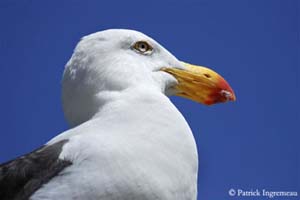
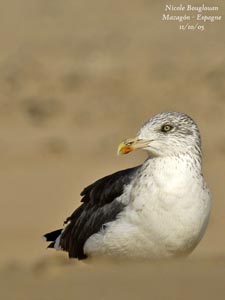
Larus fuscus
Larus pacificus
Small gulls’ species have thinner and more pointed bill, reflecting their smaller food items.
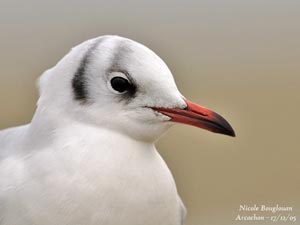
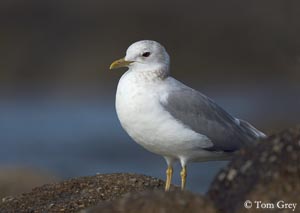
larus ridibundus
Larus canus
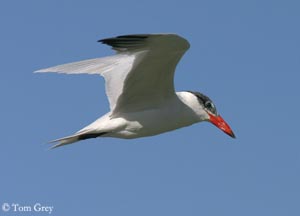
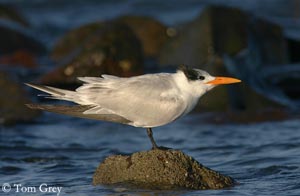
Caspian Tern
Hydroprogne caspia
Thalasseus maximus
The skimmers have very specialized bill. They differ from other Laridae by the stunning structure of the bill, showing shorter upper mandible, perfectly adapted to their feeding behaviour.
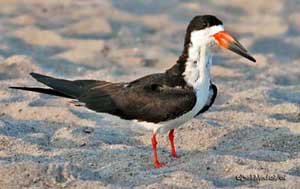
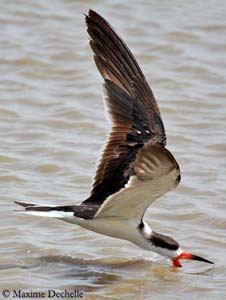
Rynchops niger
The bird flies along and “ploughs” the water with the long lower mandible. The bird skims an area of about 50-100 metres before flying up.